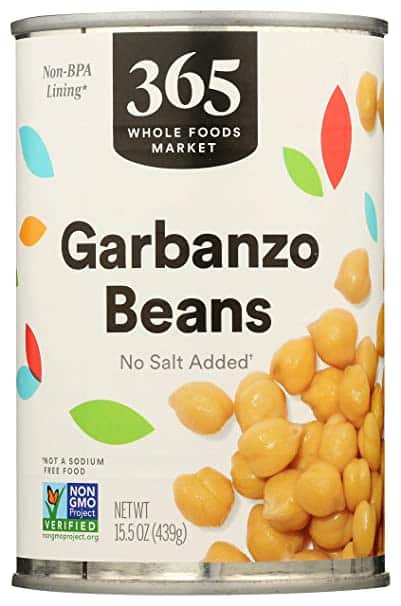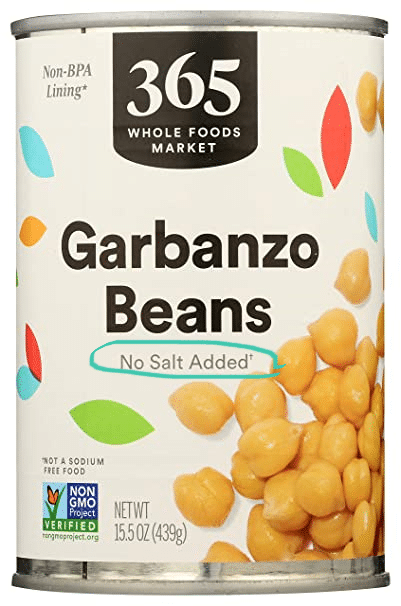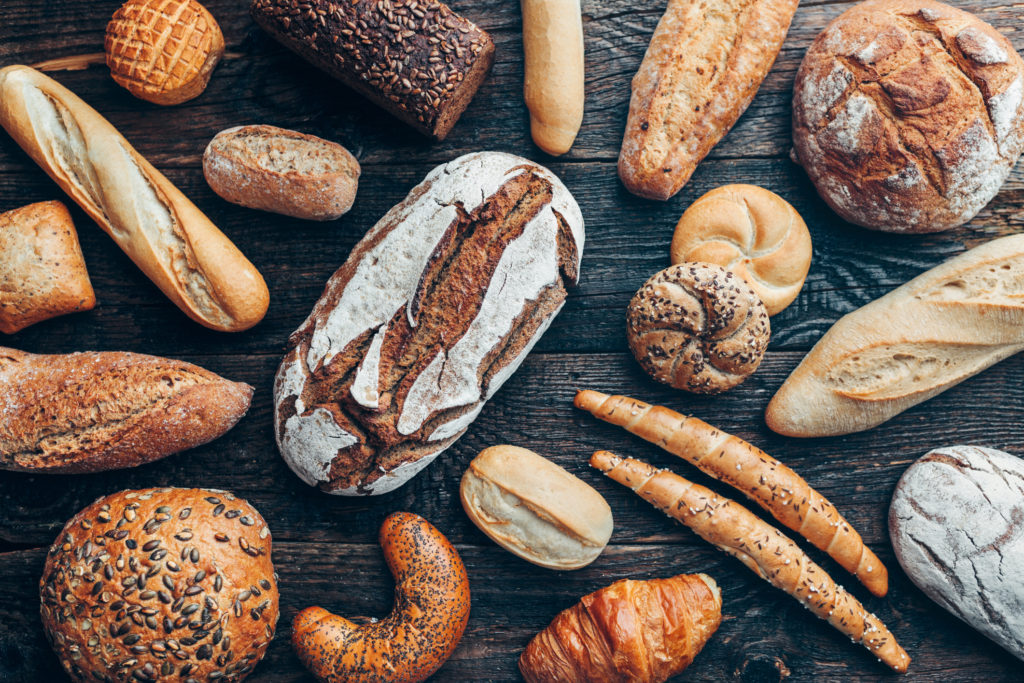If you think that beans are too high in phosphorus or potassium to enjoy with kidney disease – think again! That nutrition advice is outdated. We now encourage people living with kidney disease to include MORE beans in their diet because we know how healthy they are. Read on to learn more about beans and kidney disease.
This post may contain affiliate links through which we may earn a small commission to help keep this website free.
Table of Contents
Are beans high in phosphorus?
The total phosphorus content of a 100 calorie portion of beans can vary between 59-140mg of phosphorus. To some people, this can seem high.
However, beans are high in a compound called phytate, which is something our bodies cannot digest. This compound binds up the phosphorus and actually prevents your body from absorbing it. When it comes to kidney disease and phosphorus, we really only care about the phosphorus that our body absorbs.
The amount of phosphorus that can be absorbed from a food is sometimes referred to as the bioavailability. In general, phosphorus from plant-based foods is very poorly absorbed, so almost all plant based foods should be considered low phosphorus foods. This would mean that beans are considered a low phosphorus food for kidney disease.
The only exception to this is if the beans contain a phosphorus additive. Certain canned beans (such as baked beans) are more likely to contain a phosphorus additive, so always check ingredient lists to make sure that your beans do not contain phosphorus additives
Potassium in Beans
The potassium content of beans varies quite a bit depending on the type of bean and how it is prepared. To understand this better, let’s look at a few examples of different kinds of beans prepared different ways.
Kidney Beans

| Nutrient | Dry Beans, Boiled | Canned, drained beans | Canned, drained, rinsed beans |
| Protein | 6.5g | 6.5g | 6.5g |
| Fiber | 4.8g | 4.8g | 4.8g |
| Phosphorus | 104mg | 97mg | 94mg |
| Bioavailable Phosphorus | 41mg | 39mg | 38mg |
| Phos-Pro Ratio | 6.4 | 6 | 5.8 |
| Potassium | 304mg | 222mg | 200mg |
In this table, we are going to look at kidney beans prepared three different ways:
- Dried beans that have simply been boiled to cook them
- Canned beans that have been drained of the liquid
- Canned beans that have been drained of the liquid and rinsed
The portion size that I’m using to compare these different types of beans is roughly half a cup. Dried beans that have been boiled tend to be a little more compact while canned beans are a bit plumper, so I have adjusted the serving so that I’m comparing the same nutritional quantity of beans (6.5g of protein and 4.8g of fiber).
I’ve also added in some information about phosphorus. In these tables, I list out the actual phosphorus content, the estimated bioavailable phosphorus, and then a phosphorus-to-protein ratio. As I previously mentioned, the amount of phosphorus that is actually absorbed from beans is quite low, so I want to show you the total phosphorus (which you should not focus on) and the bioavailable phosphorus (which you should focus on). For this post, I’ve conservatively estimated the bioavailability of phosphorus as 40% (but it could be lower). When trying to limit the phosphorus in our diet, it’s the bioavailable phosphorus that matters the most. I then show a phosphorus-to-protein ratio. This is mostly for the dietitians out there reading this and not something that I would expect a person living with kidney disease to calculate. However, if you see it, just know that the smaller the number, the better. For the record, the ratios that I’m showing for kidney beans is very low meaning that beans are a low phosphorus food.
Now, If you look at the table above, you can see that the preparation with the lowest amount of potassium and phosphorus is the canned, drained, and rinsed beans. Both types of canned beans are significantly lower in potassium than the dry beans that are just boiled. And the extra step of rinsing the canned beans after draining them further eliminates about 10% of the potassium in the beans!
Does this work for other beans too? Let’s see.
Chickpeas (also known as garbanzo beans)

| Nutrient | Dry Beans, Boiled | Canned, drained beans | Canned, drained, rinsed beans |
| Protein | 5.7g | 5.7g | 5.7g |
| Fiber | 5g | 5g | 5g |
| Phosphorus | 109.2mg | 68mg | 64mg |
| Phosphorus Bioavailability | 44mg | 27mg | 26mg |
| Phos-Pro Ratio | 7.7 | 4.8 | 4.5 |
| Potassium | 189mg | 101mg | 87mg |
Once again, the canned, drained, and rinsed beans are the lowest in phosphorus and potassium. And once again, the difference between the dry, boiled beans compared to either of the canned beans is striking. Both canned beans are significantly lower in both phosphorus and potassium.
Pinto Beans

| Nutrient | Dry Beans, Boiled | Canned, drained beans | Canned, drained, rinsed beans |
| Protein | 5.6g | 5.6g | 5.6g |
| Fiber | 4.4g | 4.4g | 4.4g |
| Phosphorus | 88mg | 81mg | 77mg |
| Phosphorus Bioavailability | 35mg | 32mg | 31mg |
| Phos-Pro Ratio | 6.5 | 5.8 | 5.5 |
| Potassium | 262mg | 219mg | 187mg |
Our last example of pinto beans follows the same trend as the kidney and chickpeas. The canned, drained, and rinsed beans are the winner when it comes to potassium!
Are beans considered high in potassium?
In general, a food is considered low in potassium if it contains 200mg of potassium or less per serving. Canned beans typically meet the criteria to be considered a low potassium food. An important thing to consider when evaluating whether or not a food is high in potassium is the fiber content. Fiber helps prevent constipation, and constipation is a major contributor to potassium problems in people with kidney disease. Beans are an excellent source of fiber.
If you prefer to use dried beans, double boiling them may help remove more potassium than simply boiling them once. For more information about double boiling, check out our post on potatoes.
Are canned beans better for potassium in kidney disease?
If you are watching your potassium intake, canned beans will be the better choice. Some tips for choosing the best canned beans:

- Choose beans with no salt added. Canned beans frequently have a significant amount of sodium added to them. People with kidney disease should aim to eat 2,300mg of sodium or less per day.
- Be careful with “low sodium” or “reduced sodium” beans – These may contain potassium additives that can really add up quickly. Reduced sodium beans are also still frequently considered high in sodium. A good rule of thumb is to choose products with less sodium than calories.
- Drain and rinse canned beans – the liquid in canned beans contains a fair amount of potassium. Draining off the liquid and then rinsing with fresh water can remove a significant amount of potassium.
Are beans good for people with diabetes and kidney disease?
Yes, a serving of beans usually contains a moderate amout of carbohydrate and are high in fiber, so they will be more slowly digested and less likely to spike your blood sugar.
Are beans high in protein?
Beans are a good source of protein. If you’re on dialysis, then this is a good thing! You need more protein!
If you are not in dialysis, then you have likely been instructed to follow a moderate protein or low protein diet. However, not all proteins are created equally. One of the problems with protein in a kidney diet is the way in which in contributes to metabolic acidosis. However, plant proteins are lower in the specific amino acids that tend to produce the most acid. So swapping out your animal based proteins in favor of some plant proteins is generally going to be better for you. Also, just keep your portion sizes in mind. A half cup of beans will only have about 6.5g of protein, which is far less than the same amount of chicken (or whatever animal protein you want to compare it to!).
Are some beans better than others?
You may have noticed that in our three examples above, the nutrient information was a little different for each bean. Kidney, garbanzo, and pinto happen to be the only ones in the USDA with nutrient information populated for canned, drained and rinsed beans. We can use these examples to estimate others.
For hemodialysis patients, my top pick would be chickpeas (also known as garbanzo beans). These were the lowest in potassium and are truly a low potassium food. Lima Beans, Pinto Beans, Kidney Beans, and Navy Beans are also good choices.
For people using peritoneal dialysis who have higher potassium needs, I would recommend white beans, black beans, or great northern beans. These are higher in potassium (even after draining and rinsing).
For people not on dialysis, you can generally enjoy any type of bean (although you will need to be mindful of your quantities to ensure that you are not consuming too much protein). If your doctor or dietitian tell you that you should limit your potassium, I recommend following my recommendations for people on hemodialysis above.

A kidney diet that limits or avoids phosphorus additives and keeps sodium less than 2300 mg per day is recommended.


